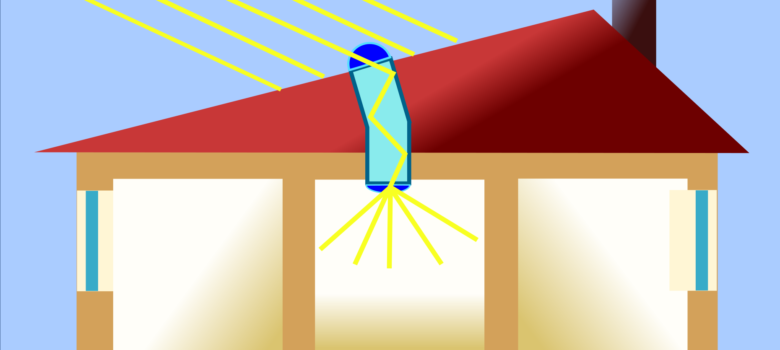
Also known as sun tunnels light tubes, light pipes or tubular skylights, these are a new way to get natural light into your home. They can transform spaces that sunlight would not normally reach, such as hallways and passages, and they are gaining popularity as an alternative to artificial lighting.
What are sun tunnels?
They are tubes lined with reflective material, with glazing at both ends. One end goes through the roof and the other goes into the ceiling of the part of the house you have chosen. Sunlight passes down them, bouncing off the mirrored surface and allowing you to flood areas with natural light.
Unlike windows, tubular skylights can be installed almost anywhere. A popular option is to pass the pipe through the loft space and into the ceiling above the stairway. They are perfect for dark spots where windows can not be installed; if the pipe is fed down the wall of the room above, you can even have a skylight on a ground floor.
Some models include ventilation, meaning they fulfil both the functions of a normal window.
Why install a sun tunnel?
Aside from being a practical solution, though, they are also a great feature in themselves – more interesting to look at than a traditional window! Having more light pouring in can also make your home feel bigger. Aesthetically, they can bring something new to a building and they provide a warmer, more ambient form of lighting than bright LED bulbs.
A brighter home has a number of benefits. Natural light is known to have positive effects on mood and mental health. Having the changing light reflected outdoors rather than just artificial light is good for you. Many people notice their sleep is better if their circadian rhythms (body clock) are less upset by artificial lighting.
Sun tunnels are designed to flood rooms with light, meaning less artificial lighting is needed during the daytime. Every saving you can make on electricity – by making the most of free sunlight – means less money spent and less environmental impact from fossil fuels.
What does a solar tunnel look like?
From the inside, they look like a bright hole, set back into the wall or ceiling. Obviously it depends on the model, but they are basically just a circular skylight. From the outside, the glass dome will slightly stick out from the roof – but you probably won’t notice unless you’re looking for it.
How much do sun tunnels cost?
Most cost between £200-300, plus installation costs. Major structural alterations are not normally necessary, so they are fairly straightforward to install in most properties. They can be a cost-effective option for bringing light into a space, reducing your dependence on electric lighting and cutting your bills.
Benefits
- Brings natural light into a property.
- Normally inexpensive.
- Cuts lighting costs.
- Sometimes suitable where windows are not.
Limitations
- Not everyone likes the futuristic look!












My parents have a light tube in their dinning room. The room in long and thin with only one small window which cannot be enlarged due to planning limitations. The room also has a store room above, so it was ideal.
The installation was fast and painless and its makes a nice change to that end of the room, they still use the lights when its dark out obviously or if a lot of light is needed, but you can now use the room during the day without turning the lights on which is loverly, not cheap, or super bright, but a real change to the room.